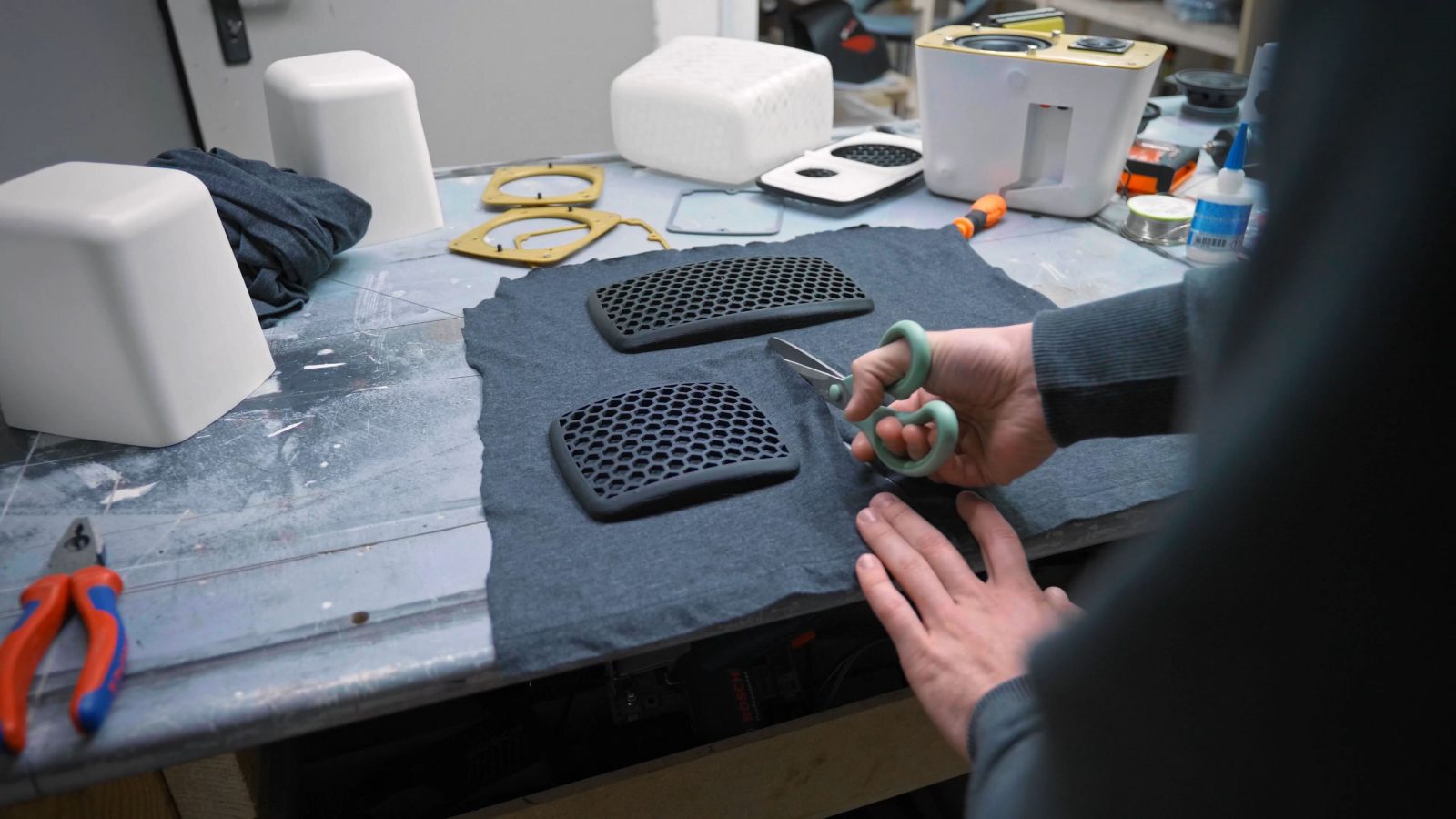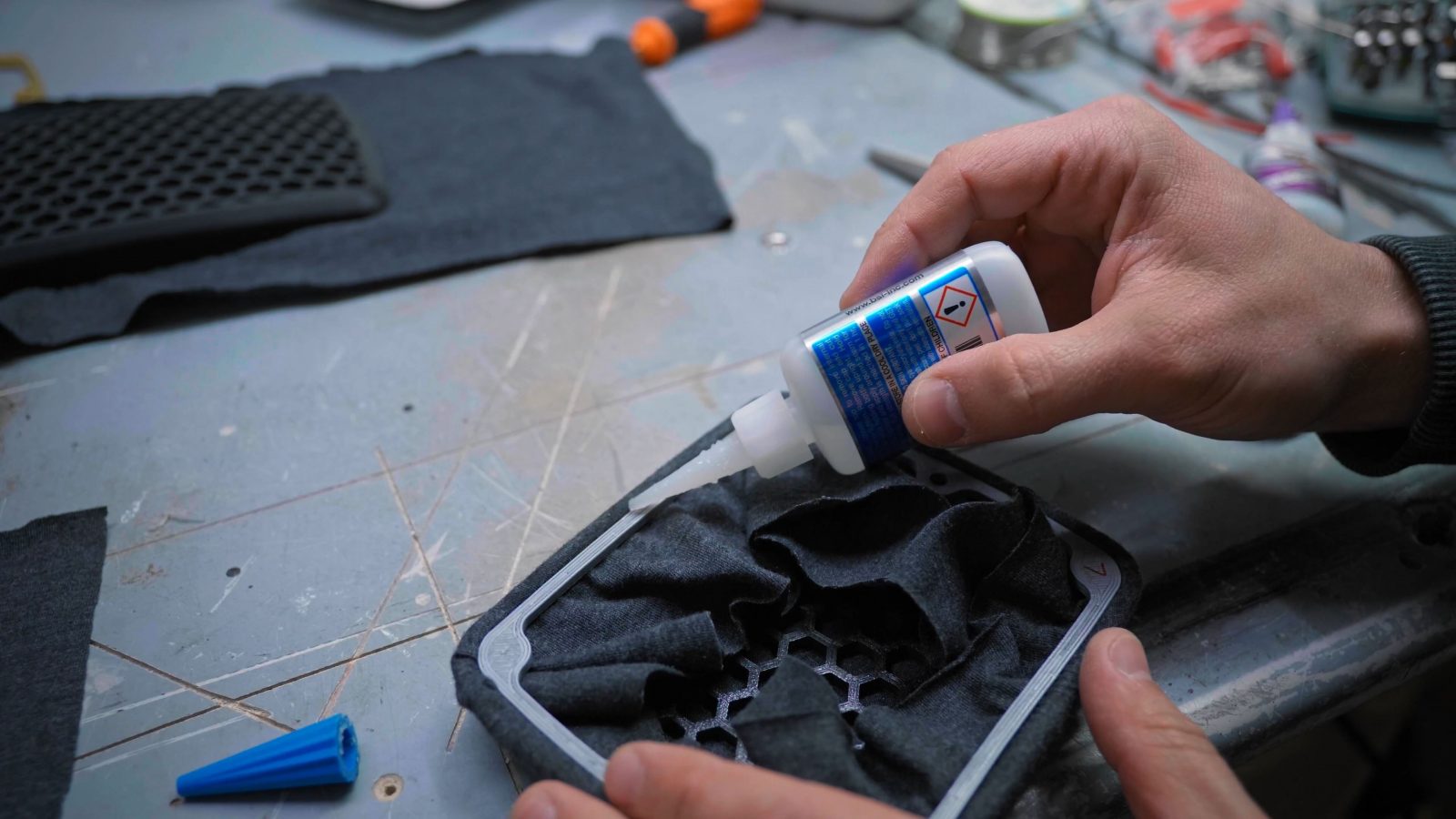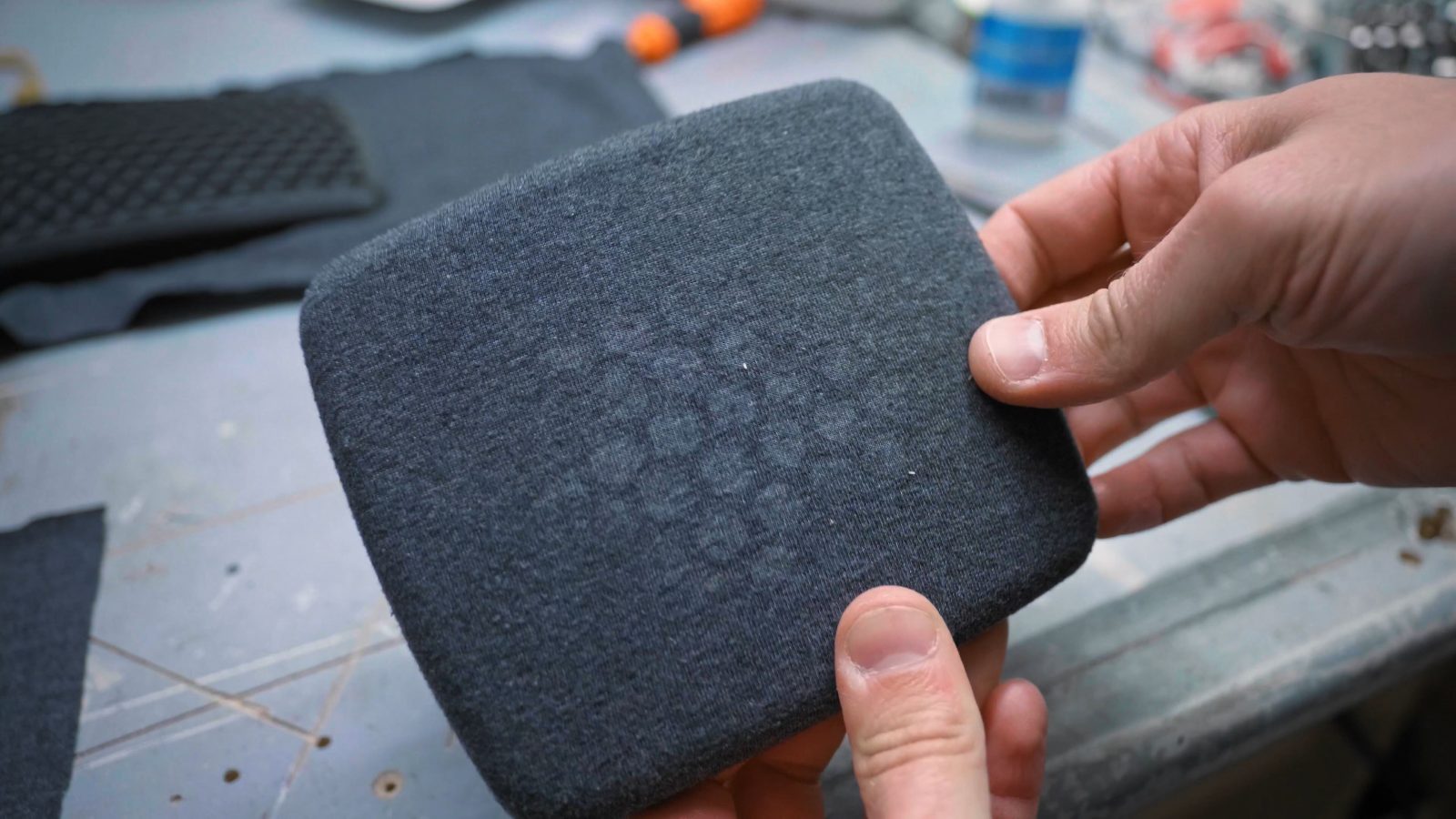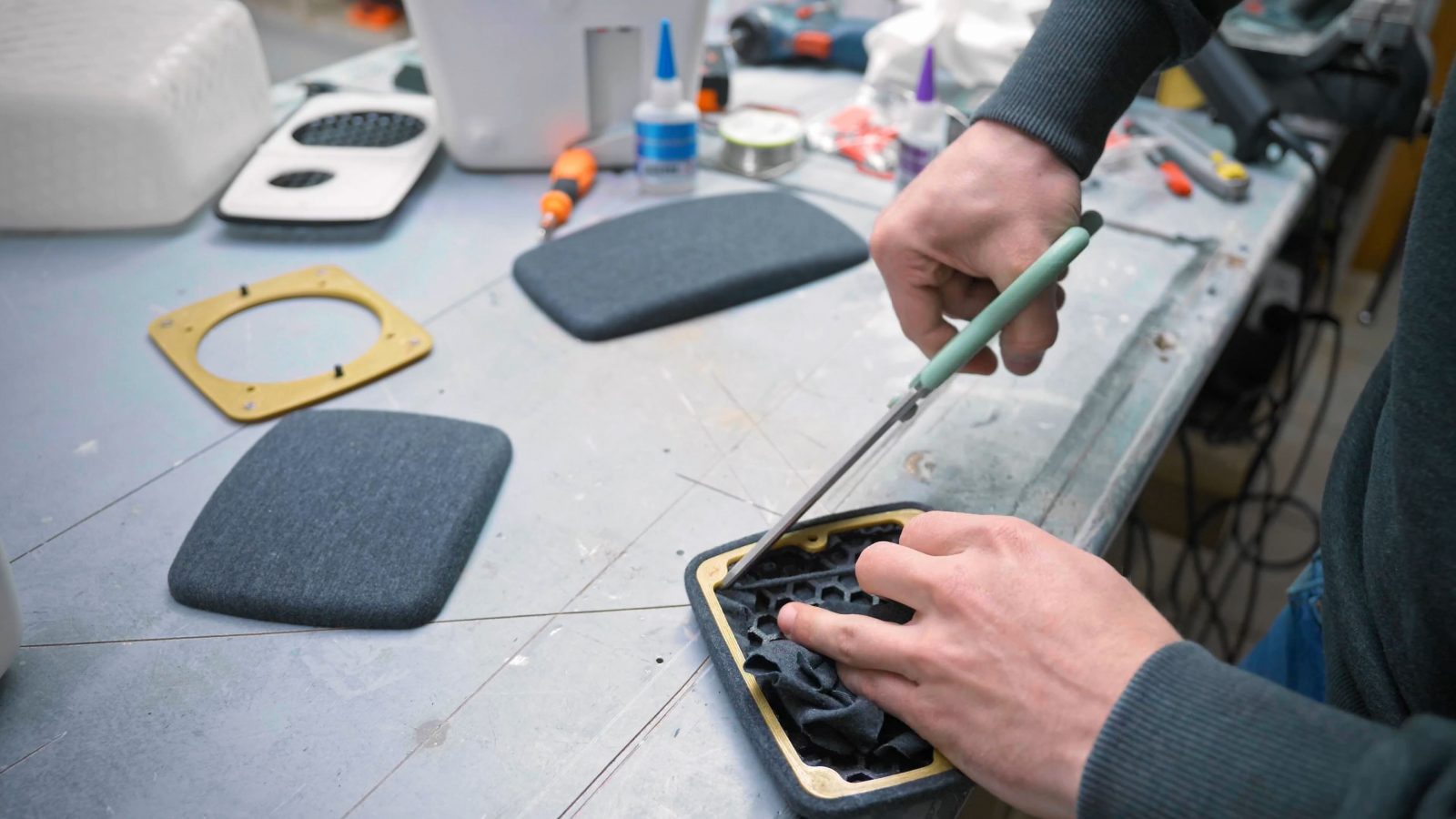Today I’m finally finishing a project that I started well over two years ago. You know, now is a great time to get all that half-finished stuff done and just get it off your mind. Originally, this was supposed to be a full set of 5.1 surround satellite speakers for my TV, or if you want to call it a “home cinema” setup, but this project hit so many snags that I ended up just getting way too frustrated with it and just kept putting it off. But I think, looking back, each of those snags was actually a chance to learn something and to do it better next time. So what I’m going to do is to first show you the “perfect world”, influencer edit of the process where everything just goes perfectly smoothly on the first try – if that’s all you want to see, that’s fine, but after that, I’m going to go through all the learning opportunities that I ran into and show you what I did about them.
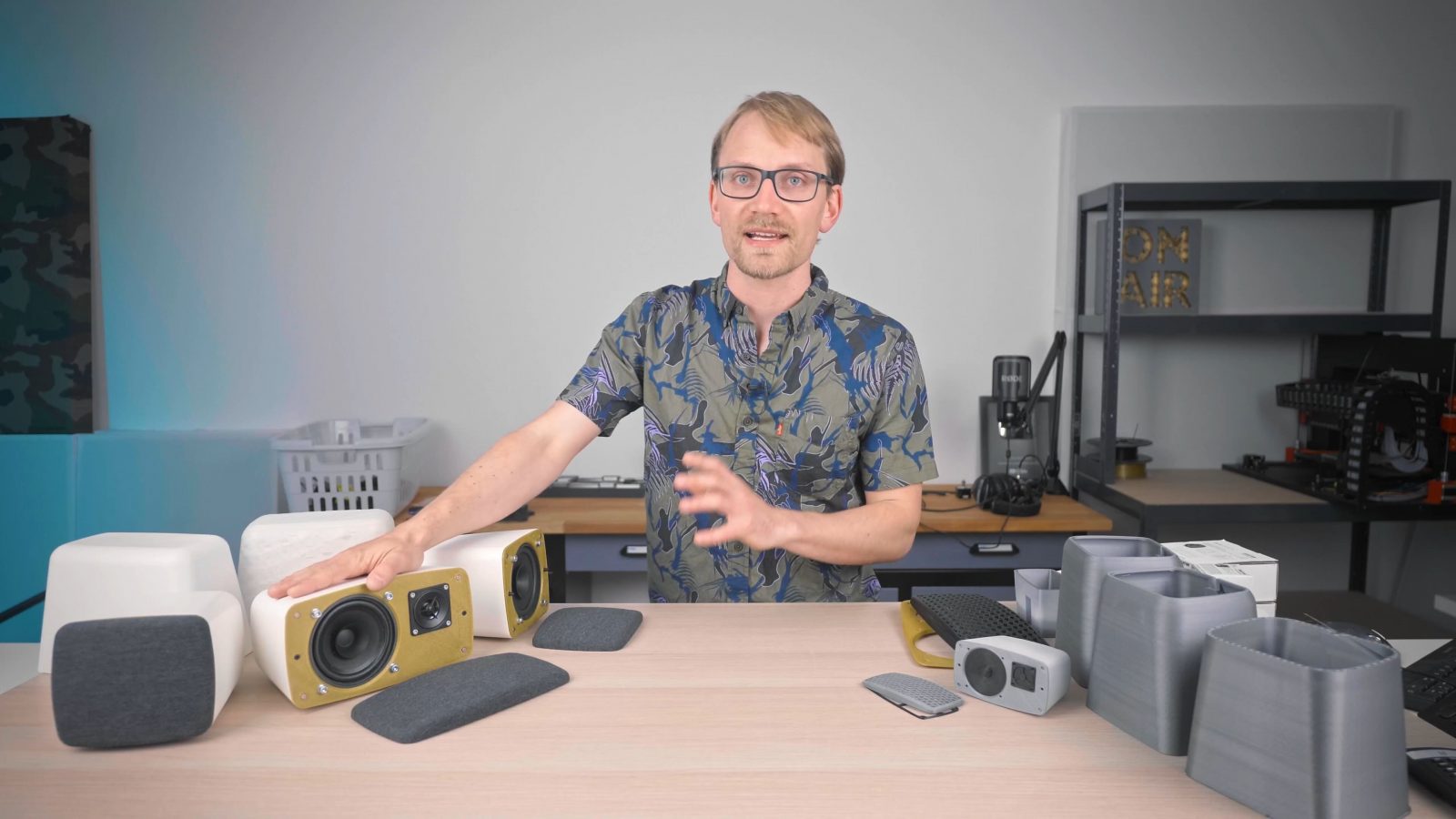
Okay, so let’s start with the speaker design first: These things are satellite speakers, so they’re the “5” in “5.1 surround” – that means they will only ever do mids and highs, and all the low frequencies will be handled by a subwoofer. So by themselves, these speakers will sound incredibly thin, but they only need to be good for things like vocal clarity. The three front satellite speakers are two way, with a 4” broadband driver and a tweeter for the higher frequencies where larger drivers like this one start to struggle.
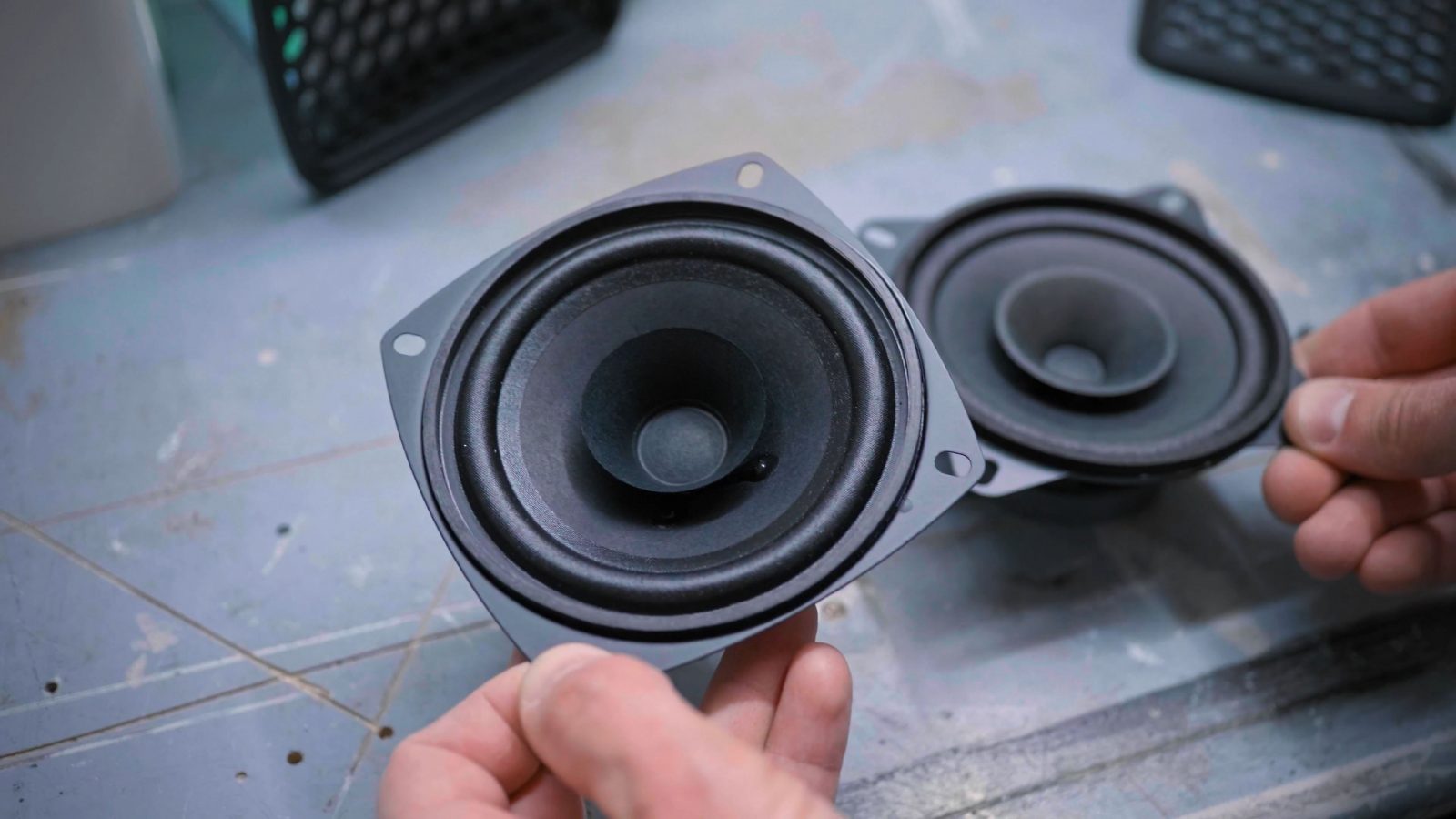
I’m using fairly cheap Visaton drivers here, the broadband ones are intended as automotive replacement units, but they’re actually pretty good overall drivers.
For the rear speakers, I’m actually skipping the tweeter, the rear channels really are just an effects channel, and for that the speakers don’t need to be super duper accurate. I’m using a less powerful and cheaper driver here, but on the flipside it’s a bit better at handling high frequencies without a tweeter. One more thing we need for the front speakers is a crossover, which will make sure the tweeter doesn’t get destroyed by the low frequency components intended for the midrange driver and the broadband driver isn’t responsible for also reproducing the crisp, high frequencies. The software Visaton provides for designing speakers actually has a really nice feature where it can incrementally optimize a crossover circuit to your specifications, so I actually cheated a bit and designed a crossover that also tweaks the frequency response a bit – basically makes the overall speaker sound a bit better with the same drivers.
The other big factor that goes into how well a particular speaker does with the low-end is how big the enclosure is, especially for sealed enclosures without a port. I knew how physically large I wanted my speakers to be at most and I knew I wanted them to be a bit better at handling low frequencies than my old ones so that I could set the crossover frequency where the subwoofer takes over a bit lower. That just ties the sound together a bit more nicely.
Anyways, that’s the acoustic part done. If you’re interested in learning more about that, I can really recommend HexiBase here on YouTube, he really understands this stuff a lot better than I do and does a great job of explaining it, too. Also does some pretty nice 3D printed speakers!
Okay, so the rest to this design really just boils down to a box. A rather complicated box, though. So we need the box, or more accurately, the enclosure, to do a few things: First, it needs to look good. If I just wanted a square wooden box, I’d stick with my old speakers or just glue together a few strips of MDF. Next, it needs to be air tight and it also needs to be rigid enough to resist the pressure difference our driver is creating. We also need a way to electrically connect the speaker, and lastly, I want it to be slim enough to fit in front of my TV without blocking it. And of course, we also need a way to mount the drivers.
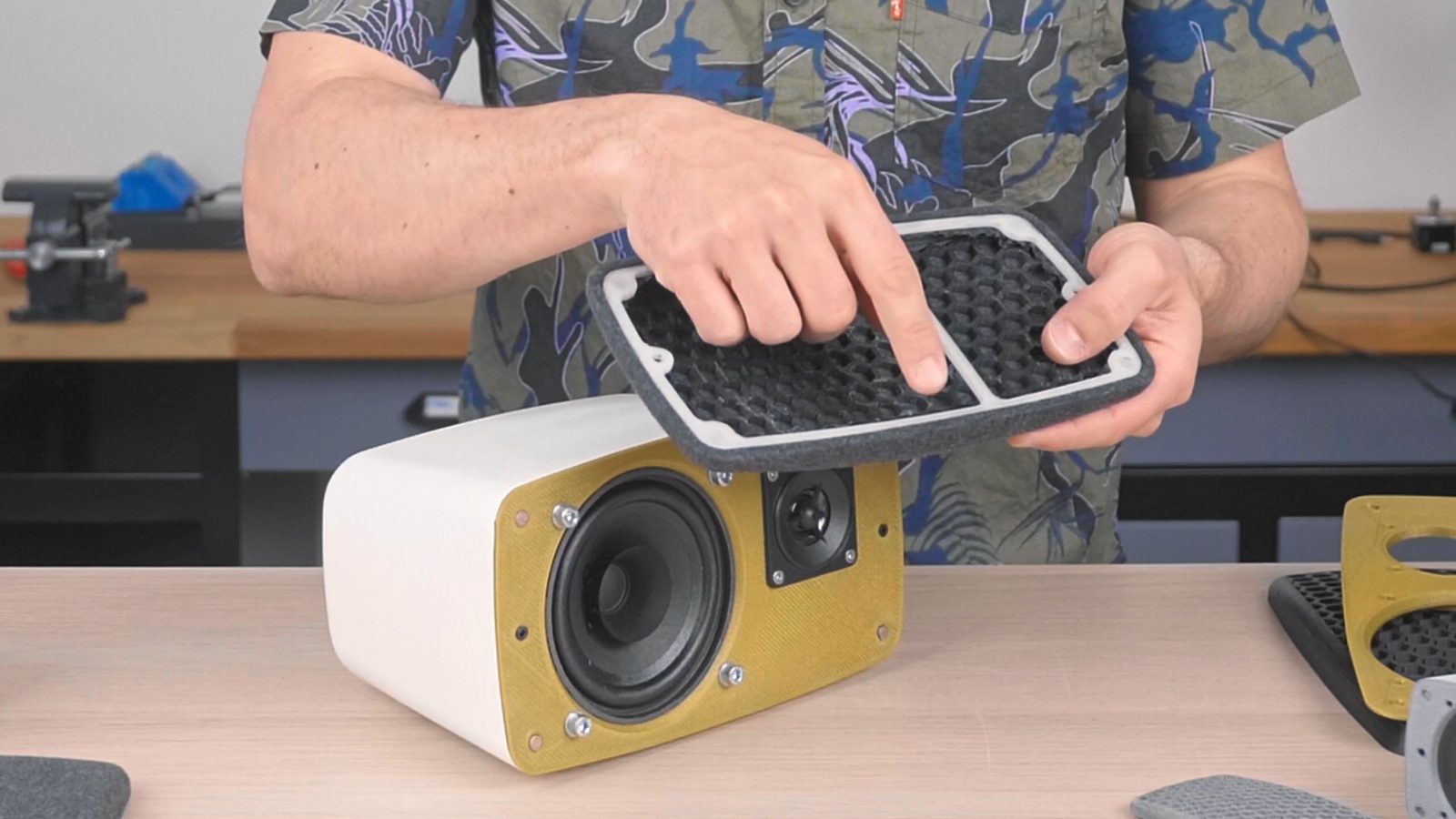
So this is what I came up with. It’s a main body with the baffle glued in place on the front and then a printed speaker grill that’s magnetically held on and has this backer piece to stretch some fabric over the front. Overall, I’m really happy with how everything looks, It may look similar to a certain device from Google, but as always, any resemblance to other speakers past or present is purely coincidental. One good idea before you commit to any mayor project is to make a prototype to see if everything works and fits as expected. I actually made two of those – the first one at half scale to see how it would look, including little tiny versions of the drivers I was going to use, and that turned out really well, I also tried how well I would be able to smooth out and finish the surface, and it looked like getting a smooth surface would be doable.
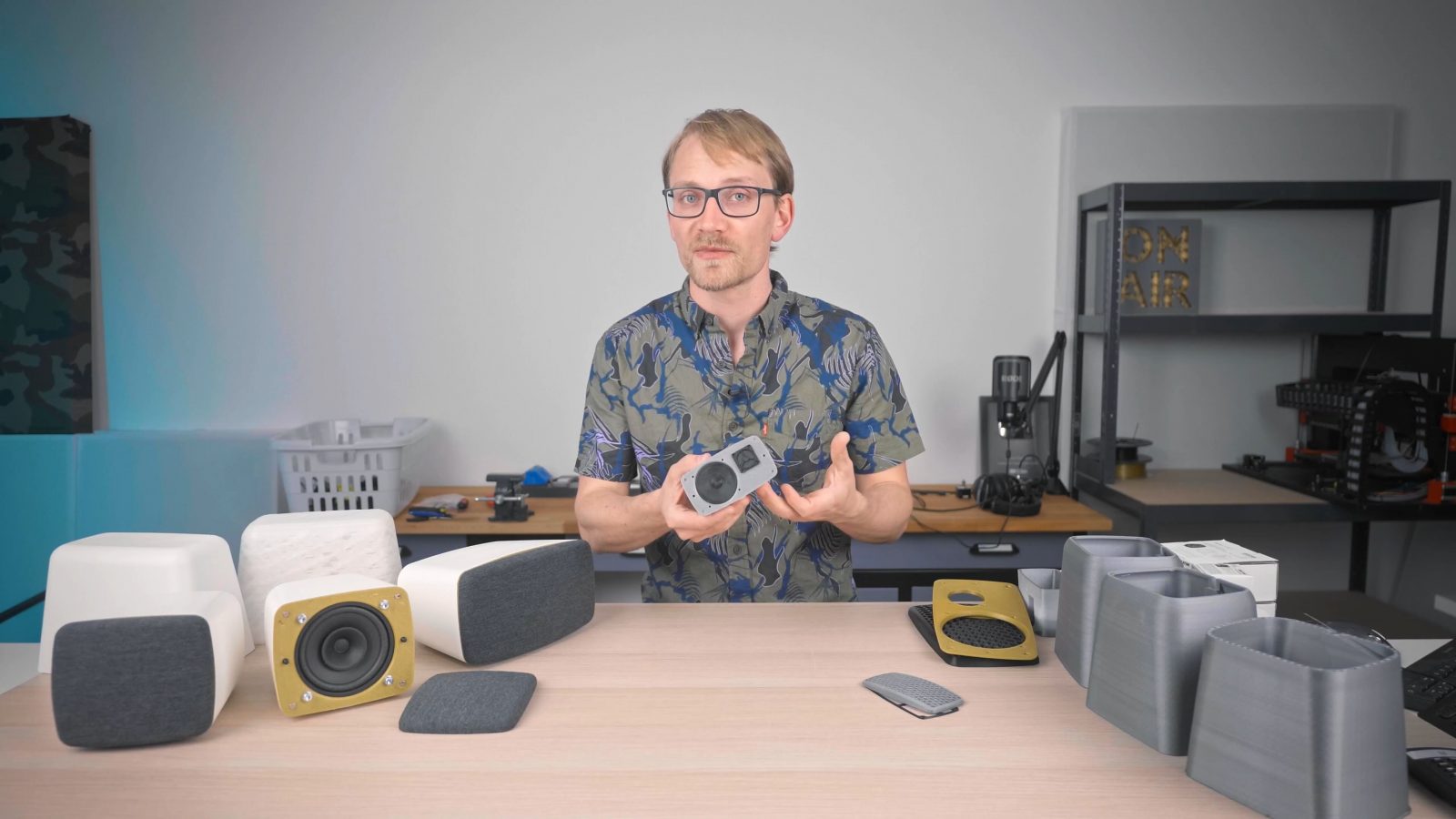
Then I also made a second prototype at full scale to check whether it would still fit and whether the simulated sound matched up with what it will actually do, and I was happy with it.

One thing you can actually see on this one already is that I changed from printing the rear enclosure in one piece to having the rear as a glued-in insert.
These parts were all printed on the Atom 2.5 EX, which is a delta printer with a 2-in-1 multiplexing hotend. So the idea was to print with PLA, since that is a material that I can easily glue and paint, and then have the necessary support material with an interface layer of PVA so that I could just dunk the parts in water and get a perfect surface everywhere. It still made sense to save material and print time, though, so instead of having the entire inside of the enclosure filled with support material, I thought I’d rather fill in any gaps on the outside that a glued-in rear cover would create. For some reason, printing the enclosure the other way around wasn’t something I considered, I think it’s because, even with soluble supports, super shallow overhangs tend to print pretty horribly and I guess I thought that would be too much work to clean up.
Before we even get to the finishing process, there’s the printing itself. Which… was an absolute pain. PVA + PLA in the same nozzle – not a great look. It works for a while, but at least on the Atom 2.5 EX, it was just incredibly unreliable. I think I ended up printing each part three times to get one successful print out of it, and that was already with pampering the PVA, like keeping it as dry as possible and printing at lower temperatures for the PLA etc. Thing is, at the time, this was two years ago, slicers didn’t support multi material as well as they do now, so I had to pull quite a few tricks on the gcode for the switchovers to even get it working at all.
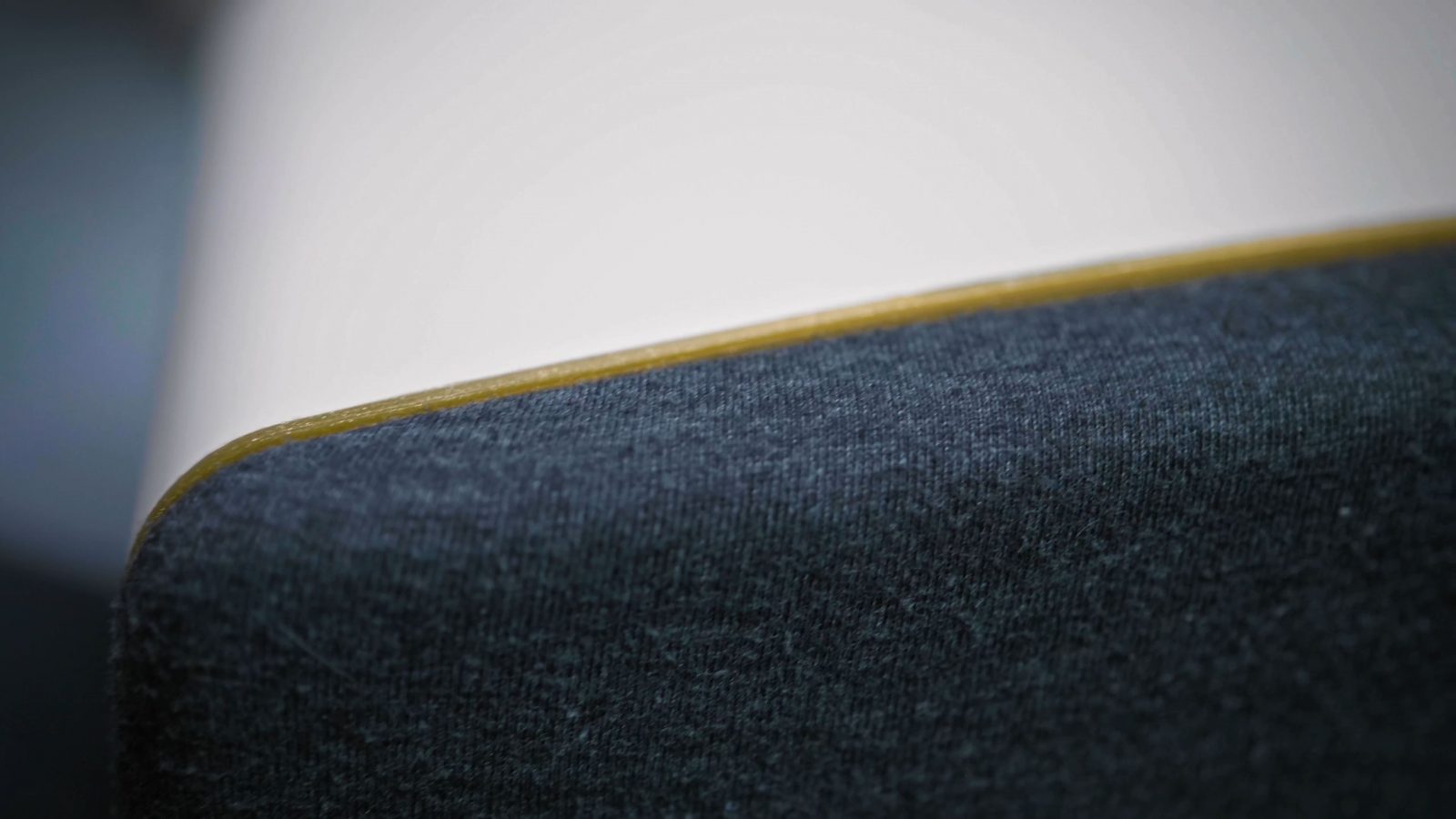
The color scheme that I settled on for the finished speaker was a painted white for the main enclosure, Fillamentum’s “Gold Happens” for the baffle, which I intentionally designed to be visible as a strip, and a grey fabric for the grill.
This is the “Proto-Pasta t-shirt grey”, which I like for the look, but also it’s actually one of the softest and stretchiest t-shirts I had, which makes it perfect for wrapping it around the grill. Proto-pasta, I hope you guys forgive me for cutting up your t-shirt.
Now, right off the printer, the main enclosure and the grill were supported parts, so they obviously still had some bits of PVA stuck to them, even though peeling away the support material actually turned out to be pretty easy. I dunked all the parts into a bucket of warm water to help the PVA dissolve, but that was a pretty big mistake.
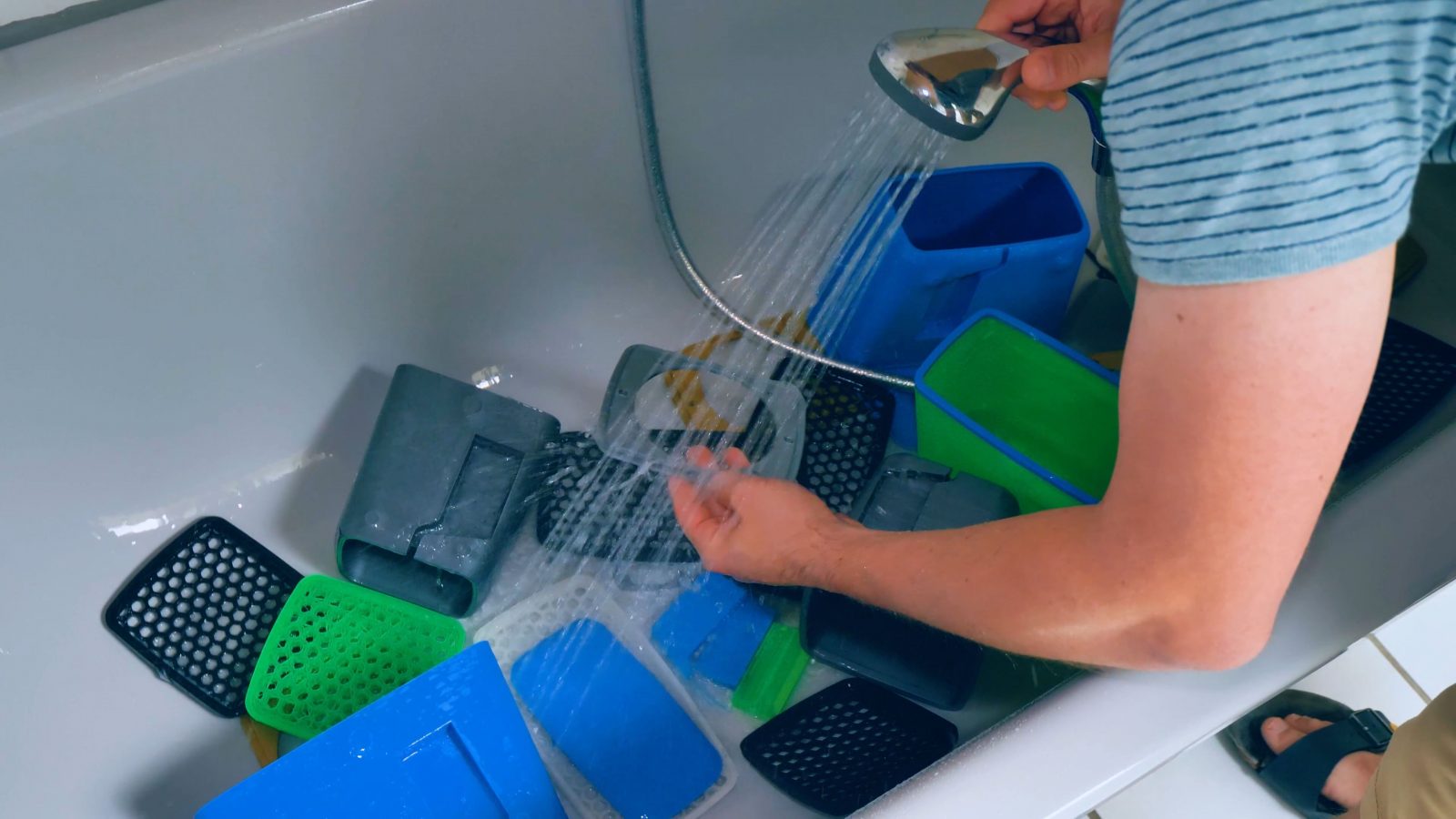
So, problem is, when air warms up, it expands, but as it cools down, obviously it also contracts again. So as I left the parts sitting there, submerged, everything started cooling off and water got sucked into the parts, through all the little crevices that an filament print just naturally has. Which meant that I definitely couldn’t move on to painting and finishing these parts with them still being half filled with water. So I drilled a few small holes in them and set them out in the sun to dry – mistake number 2. I mean, I should have seen this coming, but even in the springtime sun, the PLA still heated up too much and started warping, so that left me with a bunch of deformed parts where nothing fit together. Oh well, more printing it was.
For joining the two parts of the enclosure, I tried a few different adhesives, and solvent-welding, but I had the best results with some normal epoxy.
Okay, next challenge, getting a smooth surface. This rear body is supposed to look like it’s a single, continuous surface, so I had to do some fillering and sanding before I could paint it. What I ended up liking the most was this green 1K nitrous filler, which dries quickly and was really easy to sand.
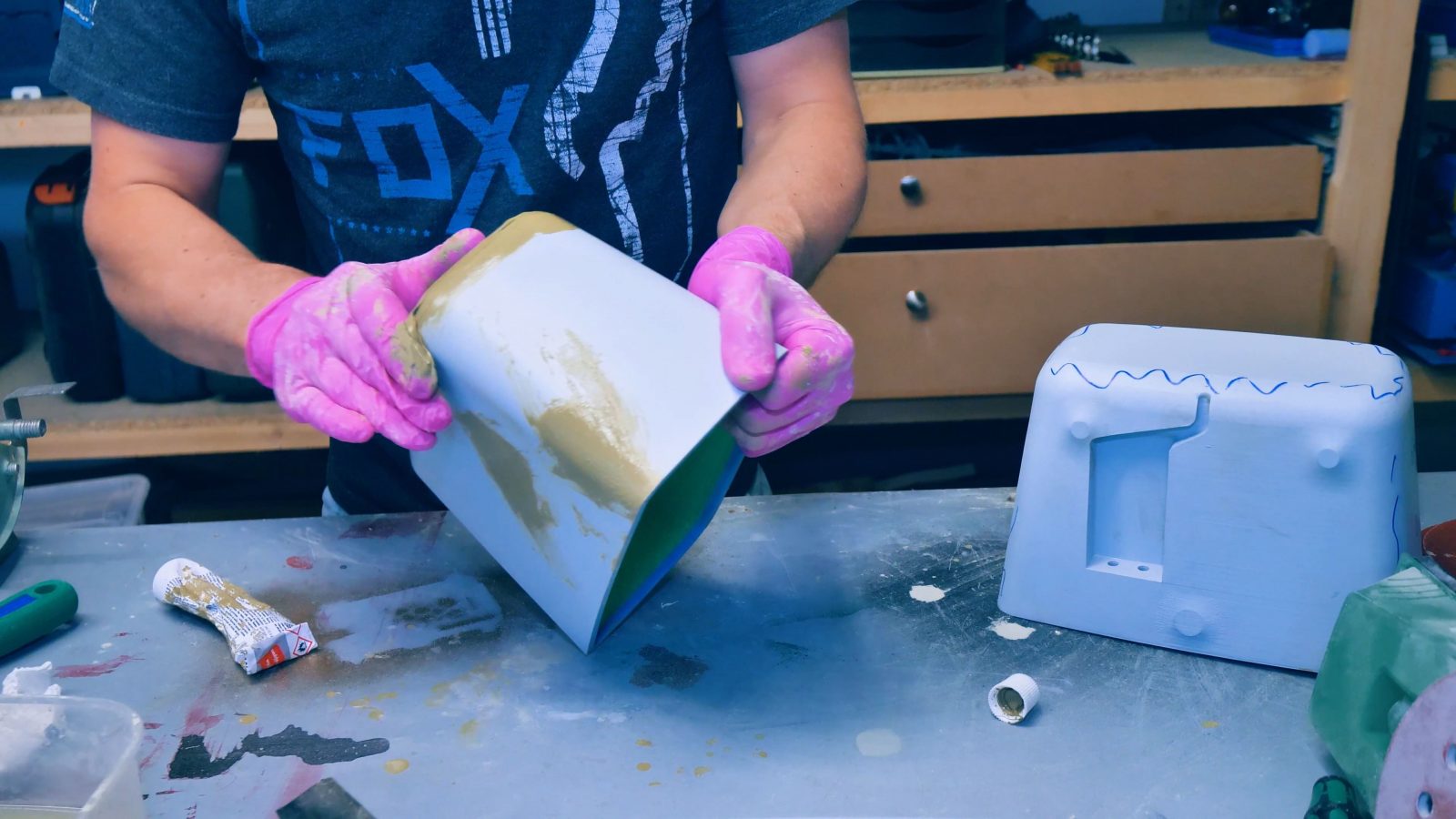
I also tried 2K automotive filler, which wasn’t as easy to apply, as well as a 2K epoxy filler/primer that’s usually used for spraying on, but just like epoxy resin itself, it actually ends up quite hard and then takes a lot of effort to sand smooth.
I also thought I had bought a bunch of filler/primer in cans, but actually, the stuff I got was only primer, without the filler part, so, with that, it was really hard to get a good coat onto the parts that would hide layer lines and flaws. So yeah, with a bunch of back and forth between sanding and applying more filler, than spraying primer, paint, sanding out flaws, painting again and in the end adding a clear coat, these parts do look… okay. They’re not perfect, and painting them indoors where you don’t get insects stuck to or pooping onto your freshly painted parts would have helped a lot, too.
So even getting that far had been a huge pile of frustration and I just needed a break from the project, but that break ended up being two years long, you know how that goes. But thankfully, all that was left to do was to assemble everything. And here’s where it got really hairy. Nothing fit together. Well, a few things did, but for example the speaker grill just did not match up with the body and the baffle, it almost looked they didn’t even have the same basic shape.
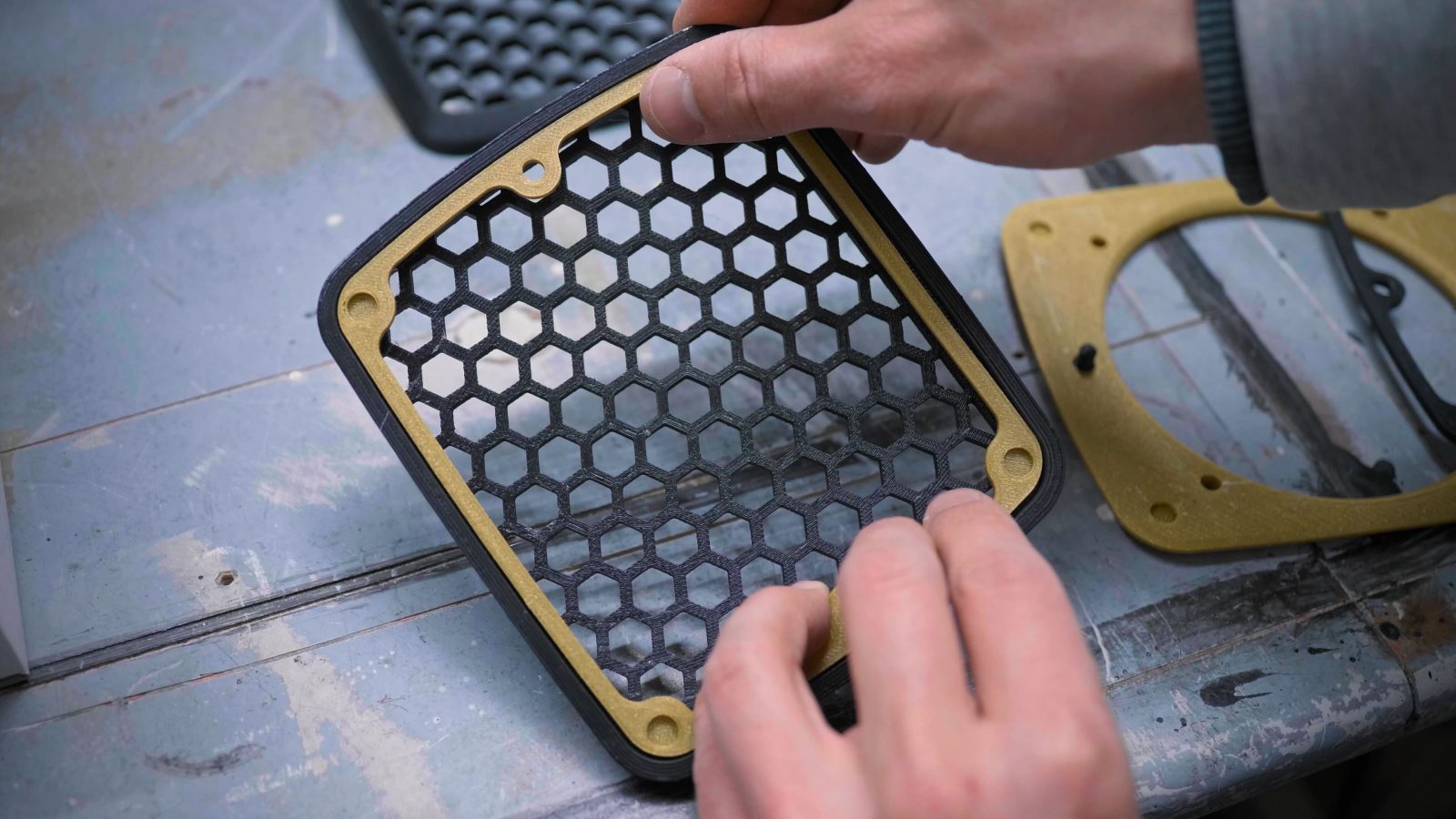
And it’s the same with the grill and inside clamping piece where it looks like the two top indents for the magnets are way closer together than the bottom ones. But I knew that everything should fit, after all, it was modeled to match up perfectly and it was all sliced with the same profiles and all.
But then it dawned on me. These were printed on the Atom, which is a delta. So what happens when a delta printer is not perfectly calibrated is that, you know, some dimensions may look just fine if you print for example a test stick or something, but parts will be distorted in a really weird way.
Here’s what the print envelope looks like for a delta. Now, if it’s miscalibrated, here’s what I believe happens to that geometry, and if you try to print something rectangular, each corner of that rectangle is going to get distorted differently. So some parts actually fit together well, because they were printed in the same orientation, but other just don’t match up at all, because they were printed flat with different sides facing up or they were even just rotated on the bed. I think that exact issue with fitment was what made me shelf the project back then.
But okay, I definitely didn’t want to reprint everything and because I had rearranged my living room in the meantime and I’m thinking about building some floor-standing speakers instead of the left and right satellite speakers and also getting rid of the subwoofer, I only needed one of these front speakers and the two rear units, so I went ahead and built them as best as I could.
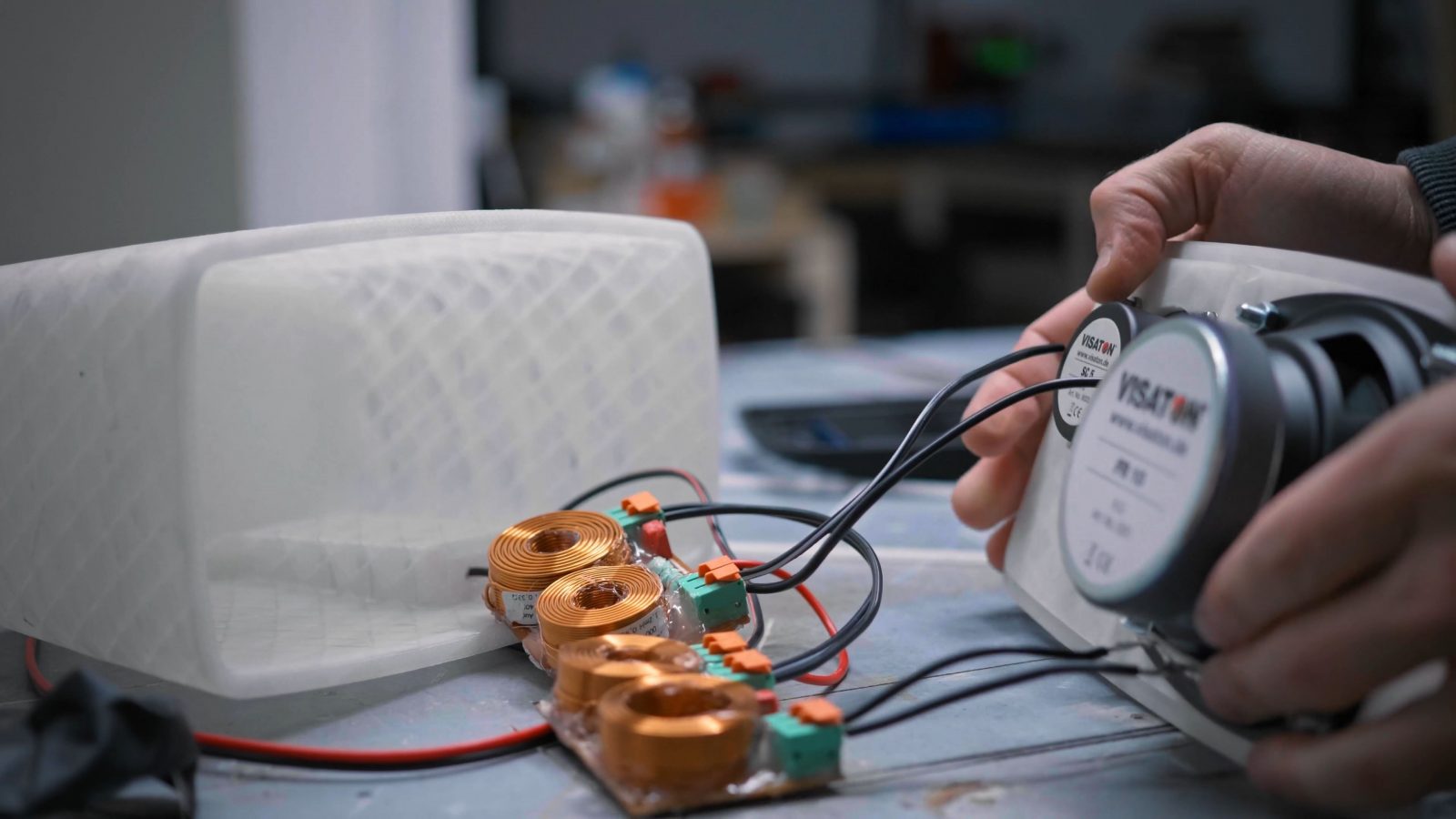
I still had my translucent prototype assembled, and started by grabbing the crossover and tweeter from that one. The paper cone on the broadband speaker got a bit dinged up, so I grabbed a new driver, these are only a few bucks and I can always use the old one in a “fun” project where that damage doesn’t matter.
The baffles for the center and rear speakers each got a pair of alignment pins glued in, as well as four magnets to hold the speaker grill in place. Gluing in magnets is actually surprisingly tricky, I’ve had cases where the magnet one hole over would pull another one out of its recess. But with those in place, I could mount in the drivers, hook up the crossover, connectors and drivers and glue the gold baffles into the enclosures. I used “gap-filling” superglue here, epoxy would also work really well and maybe fill any gaps even better. So at that point, the speaker is actually fully functional, so I gave it a quick test and it sounds as expected. But it’s not finished yet.
Now, the cloth covering actually turned out to be my favorite part of all of this. I think it turned out really well, but the process also wasn’t hard at all.
To start, I cut down the fabric to rough size, then wrapped it around the grill and pulled it through the backer piece. Then I’d slightly stretch the fabric in one direction and tack it down with some thin superglue on one edge, and after making sure the fabric’s pattern was looking good on the front, I could also tack the opposite edge.
The corners need a bit of tucking, but at this this point, the backer piece actually holds the fabric in place enough so that you can work it until it looks good without it sliding back out. And some superglue all around fixes it in place permanently. The only tricky bit here is not using too much superglue, because if you glob too much on, it will soak into the visible area and leave a hard stain. I did do that on one spot, but thankfully the grey t-shirt fabric hides it pretty well.
It is important to use thin, fresh superglue for this, because it needs to seep through the fabric and bond both to the backer frame and to the grill itself.
But yeah, overall this is a really neat technique that’s super easy to do and just adds a lot of warmth and appeal to any 3D printed parts.
But back to the speakers – with the grills on, these are now done! So how do they look and how do they sound? Let’s start with looks – here’s what a left, center and right speaker would look like, and I think that’s actually not too bad. Like I said, though, I think I’ll go with floor-standing speakers, so for now I’ll only have the one center speaker, and that, unfortunately, looks kind of lost. In the future, I might build a soundbar-style center speaker instead. But the rear speakers fit in really well.
Now, for sound, like I said, these are not meant to be listened to without a subwoofer. So once we add that subwoofer, it’s really decent. I’m not going to tell you that these are the greatest audiophile speakers in the world, because they are surely not, but, in combination with a subwoofer, they’re great for watching Netflix with surround sound, listening to music and, what I use my TV for the most, watching YouTube.
But the best thing about them is all the stuff I learned along the way. This was actually the project that inspired the “resin finishing” video, and that is a technique I would absolutely use again to get a perfect finish on something like this loudspeaker enclosure. I’ve also learned that it’s not that hard to make things that look, you know, better than just a square box with cutouts. The finishing definitely took a while for these particular speakers, but even without that, they would still look good, I think.
So before we go, I want to point out something you can do right now to help push back against the current pandemic if you have a 3D printer: Get organized! Almost every country has some community already that’s organizing and distributing equipment you can make with your 3D printer, obviously face shields is the big one right now. Even if you can only make the 3D printed parts, and not the transparent shield itself, you can still help. Here in Germany, we have makersvsvirus.org, where you can register if you can produce or are a medical institution in need of equipment; in the US, for example Matterhackers are organizing equipment distribution, so have a look at how you can help. CNC Kitchen, 3D Maker Noob and 3D Printing Nerd all have videos up on how to quickly and effectively print those, so check them out.
Thanks a lot for that, and as always, thanks for watching, keep on making, probably more important now than ever, wash your hands and I’ll see you in the next one.
The speakers were modeled with Onshape, unfortunately, I don’t have the models anymore or I’d gladly share them with you.
Materials used:
- Front: Visaton FR10 + SC5
- Rear: Visaton FR10HM
- PLA filament from Matterhackers, Fillamentum, DAS FILAMENT and Atom 3D Printed on the Atom 2.5 EX
- T-Shirt from Proto-Pasta
💙 Enjoying the videos? Support my work on Patreon!
Product links are affiliate links – I may earn a commission on qualifying purchases (at no extra cost to you)
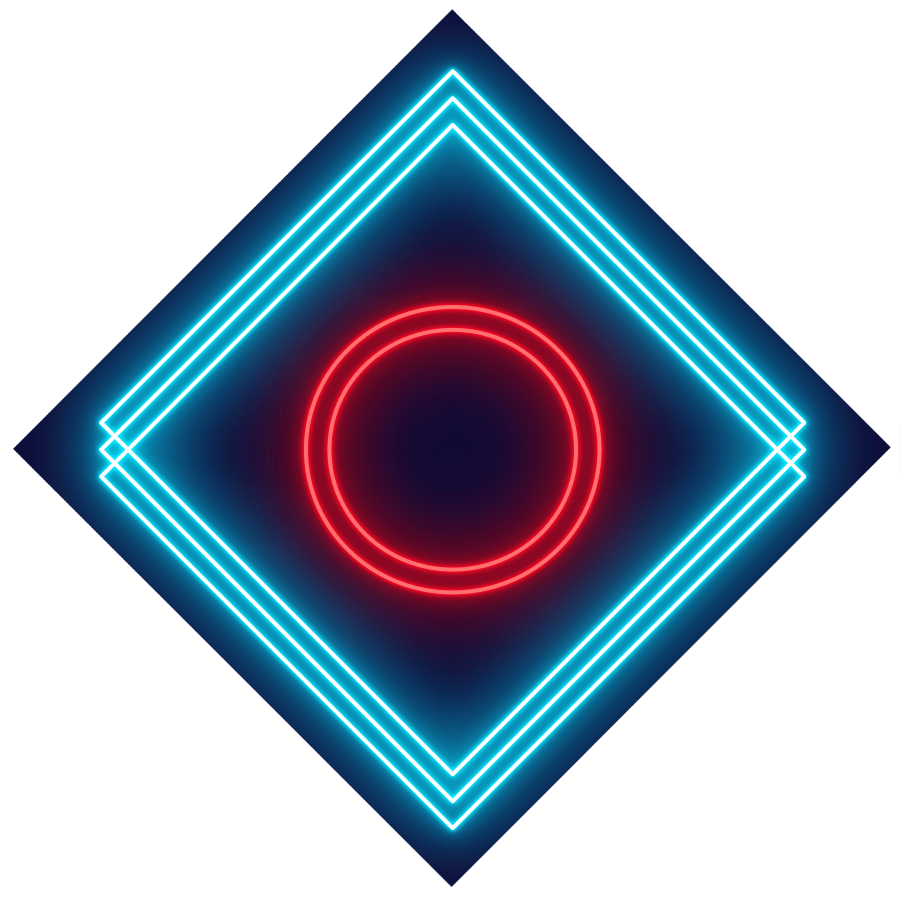
Check out my second channel “More Layers” on YouTube for livestreams

